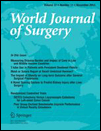Shifting From Laparotomy to Thoracoscopic Repair of Congenital Diaphragmatic Hernia in Neonates: Early Experience
Abstract
Background
Thoracoscopic repair of congenital diaphragmatic hernia (CDH) is now widely performed by pediatric surgeons. We compare our experience with this operation versus the results for a group of CDH patients treated by laparotomy at the same center over the same period.
Methods
From January 2008 to December 2011, we reviewed the medical records of 50 neonates who underwent surgery for posterolateral CDH (34 by laparotomy, 16 by thoracoscopy). Two thoracoscopic operations (12.5 %) were converted to thoracotomy. Eight patients treated with extracorporeal membrane oxygenation (ECMO) underwent laparotomy.
Results
There were no significant differences in demographic characteristics between the two groups. Both nitric oxide (p = 0.13) and high-frequency oscillatory ventilation (p = 0.06) tended to be required more frequently in the laparotomy group than in the thoracoscopy group. A patch was applied to nine patients (five laparotomy, four thoracoscopy, p = 0.42). Mean operation time was longer for the thoracoscopy group, but not significantly so (p = 0.06). Times to feeding and lengths of hospital stays were similar, as were days of postoperative ventilator use and of total ventilator use. CDH recurred in two patients, both in the thoracoscopy group (p = 0.08), and intestinal obstruction occurred in five patients in the laparotomy group. Of eight patients who received ECMO treatment, only three survived.
Conclusions
Except in patients receiving ECMO treatment, thoracoscopic repair is useful and feasible regardless of defect size or need for patching. Operation time is longer, but cosmetic appearance is better and intestinal obstruction uppers to be less frequent. However, intensive training is needed to prevent the recurrence.




